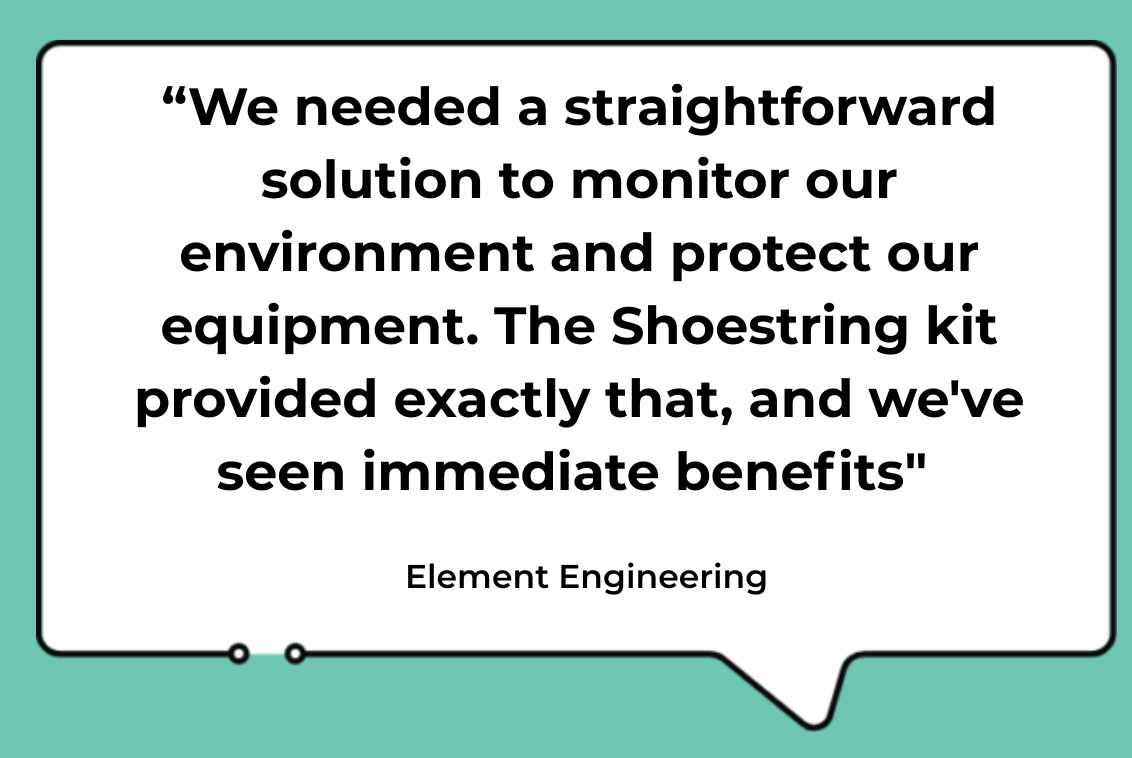Case study
Humidity and Temperature monitoring at Element Engineering
Element Engineering wanted to ensure the components stored for use in PCB’s were kept at the correct temperature and humidity to mitigate degradation and damage.

Element Engineering are a small company based in Perth, Western Australia. They solve engineering problems for their customers from the mining, electronics, medical and aerospace sectors.
Keeping their electronic components in good condition before assembling printed circuit boards is vital for high quality and resilient products – something that is very important to them.
The business challenge
Element Engineering faced challenges with maintaining optimal environmental conditions for their sensitive electronic equipment. Fluctuations in temperature and humidity can cause increased equipment failures and maintenance costs and no data was available to identify historic environmental conditions.
The solution
A Shoestring Temperature & Humidity monitoring kit (available via DPIRD programme, see below) was installed in the on-site fridge at Element Engineering HQ. The low-cost sensors integrated with existing systems to monitor environmental conditions and gave real-time data visualization through a simple dashboard interface.
With guidance from the Shoestring team, including experts from the University of Cambridge and the Department of Primary Industries and Regional Development (DPIRD), Element Engineering deployed the system in-house.
The outcomes
Element identified areas within their facility where temperature and humidity levels were outside optimal ranges. Using this data they implemented corrective measures, such as improved ventilation and equipment repositioning, leading to:
- Enhanced reliability and longevity of electronic components
- reduction in equipment failures related to environmental factors and improved overall operational efficiency.
What are the next steps?
Element Engineering plans to:
- Expand the use of the monitoring kits to additional areas within their facilities.
- Integrate the environmental data with their maintenance scheduling system to proactively address potential issues.
- Explore additional Shoestring solutions to further enhance their operational resilience.
Case study summary: Element Engineering
Solution setup:
- Solution: Temperature & Humidity monitoring
- Deployed: Low-cost sensors integrated with existing systems to monitor environmental conditions.
- Technology used: air particle sensors and Shoestring monitoring software
- Technology cost: under $1,000 (AUD)
- Time taken to deploy: Installed and operational within one day.
Outcomes:
- Able to pinpoint areas with suboptimal temperature and humidity levels
- Applied targeted fixes, including better ventilation and strategic equipment layout
- Increased reliability and lifespan of electronic components
- Fewer environment-related equipment failures
- Boosted overall operational efficiency.
Find out more about this solution
Temperature
monitoring
The Element Engineering deployment was made possible through the Department of Primary Industries and Regional Development (DPIRD) Food Industry Innovation Program
The Western Australian Government has signed a 4-year agreement to bring a world-first manufacturing initiative to Western Australia. DPIRD’s Food Industry Innovation program partnering with Shoestring to provide Western Australian SME’s with the opportunity to get on the digitalisation journey.


